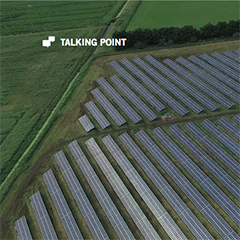As the world transitions to a low carbon electricity system, one of the key challenges is responsiveness. Traditional forms of power generation provide a reliable base load that can be dialled up and down as needed. In contrast, renewable energy generation is intermittent and cannot be increased as efficiently in response to peaks in demand; the sun doesn’t always shine, the wind doesn’t always blow.
As solar’s share in global energy generation continues to rise exponentially, the industry’s ability to innovate expands too, as large corporations continue to invest in this sustainable clean energy source. Thanks to rapid innovations in the application of digital technology the solar sector is able to offer one of the most flexible forms of power generation available.
Industry 4.0
The world has seen a series of epochs: the first industrial revolution transformed production with mechanics, Industry 2.0 saw electricity enable mass production, and Industry 3.0 drove forward the increased use of electronics and IT. Today, a digital revolution is firmly underway and is considered by many to be the dawn of Industry 4.0. Smart technologies, including the Internet of Things, big data, cloud computing, artificial intelligence, virtual reality and other forms of advanced communication, are fundamentally changing the way businesses and societies operate.
When applied to solar PV, Industry 4.0 is enabling the effective management of an abundant but volatile form of energy generation, providing much needed stability and reliability. The increase in the responsiveness of solar PV, as a source of energy, is also making the industry more competitive. With the correct application of smart technology and careful analysis, solar PV is well on the path towards a levelised cost of electricity (LCOE), where it can compete with traditional forms of energy on a level playing field, without subsidy. To achieve this grid parity, the industry must commit to the long-term digitalisation of solar, and continue to invest in making smart technologies smarter.




























